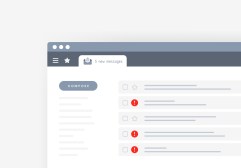How to Establish a Strong Foundation for Your Remote-First Business
In today’s increasingly digital world, many businesses are embracing remote work as a permanent solution. Establishing a remote-first company requires careful planning and execution to ensure seamless operations, effective communication, and a strong company culture. In this article, we will explore the foundational steps necessary to set up your remote-first business for success.
Define Your Company Vision and Goals
The first step in establishing your remote-first company is to define your vision and goals. What do you want to achieve? Ensure that all team members understand the mission of the business and how their roles contribute toward these objectives. This clarity helps in aligning efforts across the organization, even when working from different locations.

Choose the Right Technology Stack
Selecting appropriate tools and technology is crucial for maintaining productivity in a remote environment. Invest in reliable communication tools such as Slack or Microsoft Teams, project management software like Asana or Trello, and video conferencing platforms such as Zoom or Google Meet. Make sure these tools integrate well with each other for a seamless workflow.
Establish Clear Communication Protocols
Effective communication is vital in a remote-first setup. Develop protocols that dictate how information should be shared among team members. This can include guidelines on daily check-ins, updates on project progress, or methods of providing feedback. Encourage an open-door policy where employees feel comfortable reaching out with questions or concerns.
Build a Strong Company Culture
Creating a cohesive company culture can be challenging without face-to-face interactions but is essential nonetheless. Organize virtual team-building activities, celebrate milestones together online, and encourage social interactions among employees through informal channels like coffee breaks over video calls. A strong company culture fosters engagement and retains talent even when working remotely.
Focus on Employee Well-being
Prioritizing employee well-being is critical for long-term success in a remote-first business model. Provide resources for mental health support and promote work-life balance by being flexible with schedules where possible. Encouraging regular breaks during work hours can prevent burnout while fostering productivity.
By following these foundational steps—defining your vision, selecting the right technology stack, establishing clear communication protocols, building strong company culture, and focusing on employee well-being—you’ll be well on your way to creating an effective remote-first business that thrives even from afar.
This text was generated using a large language model, and select text has been reviewed and moderated for purposes such as readability.











